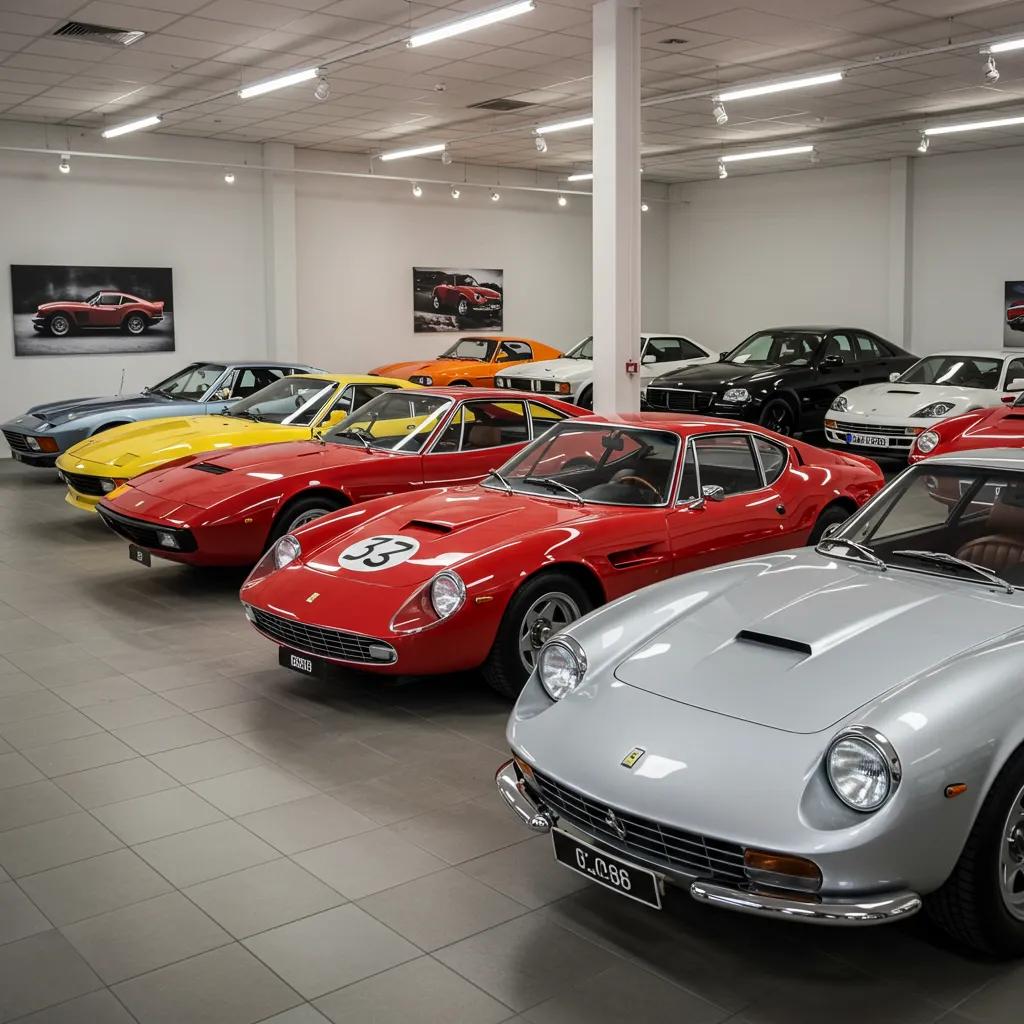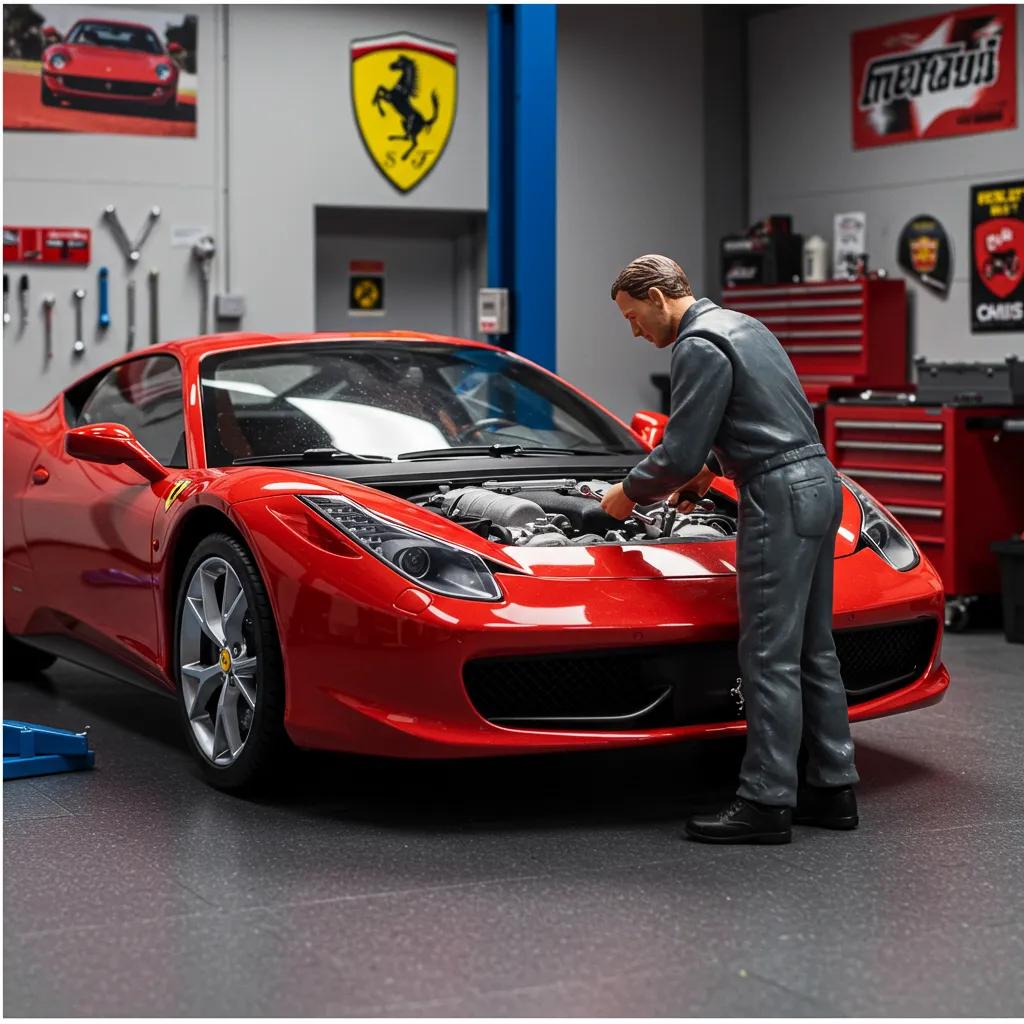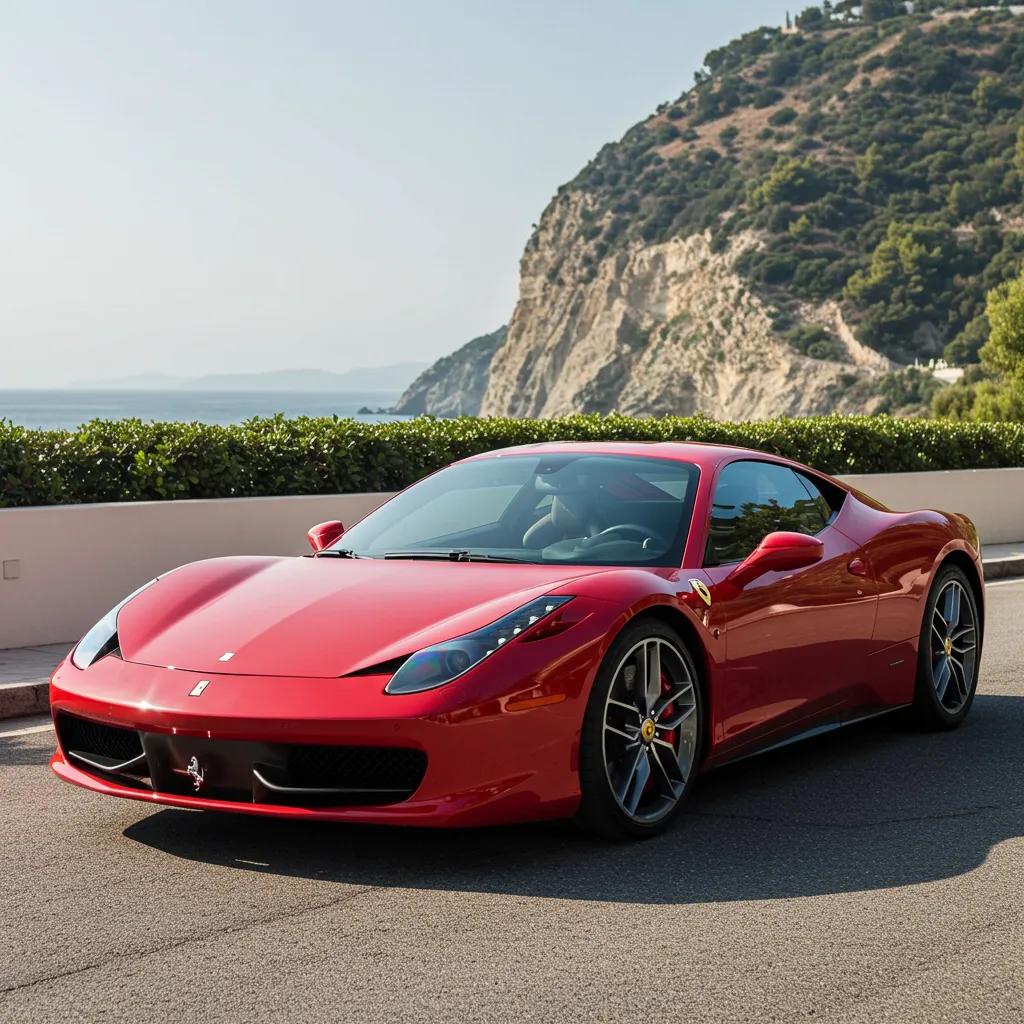Essential Insights on Procuring a Used Ferrari for Sale: A Comprehensive Buyer’s Guide
When the average used Ferrari exchanges hands for around $401,984, buyers demand precise guidance to navigate market shifts, inspection protocols, and ownership costs. This buyer’s guide delivers actionable intelligence on 2024–2025 market trends, investment-grade models, pre-purchase inspection essentials, typical mechanical pitfalls, depreciation and cost projections, transaction steps, and authentication best practices. Whether you’re exploring listings at 1scud.com – Ferrari Marketplace or preparing to list your own classic, these insights will sharpen your Ferrari buying strategy and protect your investment.
What Are the Current Used Ferrari Market Trends in 2024-2025?
The used Ferrari market in 2024–2025 reflects a cooling phase after post-pandemic peaks, driven by shifting buyer demographics and broader luxury-vehicle corrections. Understanding these trends helps buyers gauge timing and value when hunting a used Ferrari for sale.
How Has the Used Ferrari Market Cooled and Corrected Recently?
Global demand for pre-owned Ferraris pulled back 15% in early 2024, easing overheated prices and restoring negotiation leverage for buyers. Pandemic-era bidding wars subsided as supply stabilized, which means today’s shopper can secure a well-maintained model without premium markup.
Used Ferrari Market Trends and Correction in 2024-2025
Which Ferrari Models Are Appreciating or Depreciating?

Models with limited production and racing pedigree often buck depreciation:
These patterns highlight that classic homologation elevates value while mass-market supercars face faster declines.
Ferrari Model Depreciation and Investment Potential
What Is the Average Price Range for Used Ferraris Today?
Entry-level V8 models like the 360 Modena and F430 now trade between $80,000 and $120,000, whereas modern V8 turbos (458 Italia, F8 Tributo) fetch $200,000–$300,000. Rare V12 icons command $500,000 to multi-million-dollar price tags, depending on certification and provenance.
How Do Regional Market Differences Affect Used Ferrari Prices?
Used Ferrari prices vary significantly across markets:
- United States: Slight discounts due to higher supply, average price $401,984.
- United Kingdom: 5–10% premium reflecting import costs and right-hand-drive rarity.
- Continental Europe: Stable pricing tied to auction demand in Germany and Italy.
Regional taxes, shipping logistics, and local enthusiast communities shape these variations.
Which Used Ferrari Models Offer the Best Investment Potential?
Selecting a Ferrari with growth potential requires balancing rarity, historical performance, and certification status. Insight into classic and modern icons guides investment-focused acquisitions.
What Are the Top Classic Ferraris That Appreciate Over Time?
Classic limited editions consistently outperform mainstream models:
How Do Modern Models Like the 458 Italia and F8 Tributo Perform as Investments?
Modern V8 Ferraris, such as the 458 Italia and F8 Tributo, have shown modest appreciation of 5–10% post-2020 thanks to enthusiast demand and impending discontinuation of naturally aspirated engines. Their strong engineering and emotional appeal underpin steady value retention.
What Factors Influence Ferrari Investment Value?
Three primary factors drive Ferrari appreciation:
- Rarity: Limited production runs or special editions enhance scarcity.
- Certification: Classiche authentication verifies originality.
- Provenance: Documented history and ownership pedigree boost buyer confidence.
Together, these attributes form a durable valuation framework.
How Does Ferrari Classiche Certification Enhance Resale Value?
Ferrari Classiche certification confirms a vehicle’s authenticity and factory-spec restoration, promoting buyer trust and commanding premiums up to 15%. This official validation aligns with collector expectations for originality and maintenance.
Impact of Ferrari Classiche Certification on Resale Value
What Should You Expect During a Ferrari Pre-Purchase Inspection (PPI)?

A thorough PPI safeguards against hidden repair liabilities and verifies mechanical integrity before finalizing a purchase.
What Is Included in a Comprehensive Ferrari Pre-Purchase Inspection Checklist?
A robust PPI covers engine health, chassis condition, electronics, fluids, and interior trim:
- Engine and Drivetrain Assessment – Compression test and leak inspection.
- Transmission and Clutch Evaluation – Gear engagement and hydraulic integrity.
- Suspension and Brake Inspection – Shock absorber function and brake rotor wear.
- Electrical System Diagnostics – Fault code read-out and battery load test.
- Body and Paint Examination – Panel alignment and paint thickness scan.
These items collectively ensure the vehicle meets safe-operation standards and protects your investment.
How Much Does a Ferrari Pre-Purchase Inspection Typically Cost?
PPI fees range from $900 to $1,800 depending on geographic region and specialist credentials. Comprehensive inspections by certified Ferrari technicians generally fall at the upper end of this range.
Where Can You Find Reputable Ferrari Specialists for PPI?
Independent Ferrari-certified workshops and factory-trained mechanics provide the most reliable PPI services. Checking credentials through Ferrari’s official network or enthusiast forums ensures you select an expert with documented Ferrari experience.
How Can PPI Identify Common Ferrari Ownership Problems?
PPI reveals issues like worn timing belts, sticky electronic controls, and oil seepage before they become costly repairs. Early detection of transmission wear or electrical module failures prevents unexpected downtime and preserves resale value.
What Are the Most Common Problems with Used Ferrari Models?
Awareness of prevalent mechanical and electrical faults helps buyers anticipate maintenance needs and negotiate fair pricing.
Which Issues Are Frequent in Ferrari 360 and F430 Models?
Ferrari 360 Modena and F430 often exhibit dash leather peeling, sticky climate-control buttons, and hydraulic handbrake failures. Recognizing these age-related wear points informs accurate service budgeting.
How Do Electrical and Transmission Problems Affect Used Ferraris?
Modern Ferraris rely on intricate electronic control units (ECUs) and F1 transmissions. Malfunctioning sensors or solenoid packs can lead to erratic shifting, while ECU faults may trigger limp-home modes, underscoring the importance of full electronic diagnostics.
What Are Typical Oil Leak and Suspension Wear Signs in Older Ferraris?
Common leak sources include rear main seals, oil cooler hoses, and valve-cover gaskets. Worn suspension bushes and shock mounts manifest as uneven tire wear and reduced ride comfort, requiring thorough under-carriage inspection.
How Can You Source Genuine Ferrari Spare Parts?
Authorized Ferrari dealers and specialized parts suppliers offer OEM components certified by Ferrari Classiche. Verifying part numbers and utilizing factory catalogs ensures authenticity and correct fitment.
How Does Ferrari Depreciation Vary by Model and What Are Ownership Costs?
Depreciation curves and annual expenditures shape total cost of ownership, guiding long-term budgeting for Ferrari enthusiasts.
What Are Typical Depreciation Rates for Popular Ferrari Models?
How Can You Estimate Annual Maintenance and Insurance Costs?
Annual maintenance for a used Ferrari averages $3,000–$8,000, factoring timing belt services and routine fluid changes. Insurance premiums vary by model and driver profile but typically range from $5,000 to $10,000 per year for high-value vehicles.
What Strategies Maximize Ferrari Resale Value?
Consistent servicing at Ferrari-authorized facilities, preserving original components, and obtaining Classiche certification all reinforce resale value. Keeping a detailed maintenance log and limiting modifications enhances buyer confidence.
How Does Ownership Experience Differ Between V8 and V12 Ferraris?
V8 Ferraris deliver agile handling and lower running costs, while V12 models offer elevated performance and soundtrack at the expense of higher fuel consumption and maintenance. Enthusiasts choose based on driving priorities and budget allocations.
What Are the Key Steps in the Buying Process for a Used Ferrari?
A structured acquisition roadmap ensures smooth transactions—from initial research to post-purchase servicing.
What Are the Pros and Cons of Dealer vs. Private Sales?
Buying from a certified dealer offers warranty backing and transparent history reports, while private transactions may yield lower prices but carry higher due-diligence risk. Dealer purchases trade cost savings for peace of mind and documented provenance.
What Financing Options Are Available for Used Ferrari Buyers?
Ferrari-specialized lenders and luxury auto finance providers offer tailored loan terms with competitive rates. Leasing conduit programs and balloon financing structures can optimize cash flow for high-net-worth buyers.
How Can You Negotiate the Best Price for a Used Ferrari?
Leverage recent market-trend data, documented inspection findings, and known model-specific issues to substantiate price adjustments. A pre-purchase inspection report from an accredited specialist provides factual leverage points.
What Are the Post-Purchase Steps: Registration and Initial Servicing?
After sale completion, register the vehicle through local DMV channels, secure appropriate liability coverage, and schedule initial service with a Ferrari-certified workshop. Early maintenance alignment with factory-recommended intervals preserves performance and warranty eligibility.
How Can You Authenticate a Used Ferrari and Why Is It Important?
Authentication protects against fraud, assures originality, and underpins both operational reliability and long-term valuation.
What Is the Ferrari Classiche Certification Process?
Ferrari Classiche certification involves verifying chassis and engine numbers, inspecting original components, and confirming factory-spec finishes. A multi-stage technical audit culminates in an official Certificate of Authenticity.
How Does Certification Impact Buyer Confidence and Market Value?
Certified Ferraris routinely achieve 10–15% higher sale prices due to verified originality and enhanced transparency. Buyers gain trust in historical accuracy, reducing fears of undisclosed modifications.
What Documentation Should You Verify When Buying a Used Ferrari?
Essential records include factory build sheets, service invoices, accident history reports, and previous Classiche certificates. Cross-referencing VINs with official Ferrari databases eliminates misrepresentation.
How to Detect Potential Fraud or Misrepresentation in Used Ferrari Sales?
Scrutinize odometer readings against service stamps, compare engine and chassis numbers to factory archives, and look for inconsistent paint thickness readings. Engaging a Ferrari-authorized authenticator further mitigates fraud risk.
Ferrari ownership combines passion with financial stewardship. By aligning trend analysis, investment criteria, inspection rigor, maintenance planning, and authentication protocols, you can confidently procure a used Ferrari that meets both driving aspirations and long-term value objectives.


